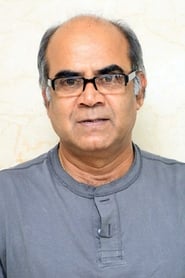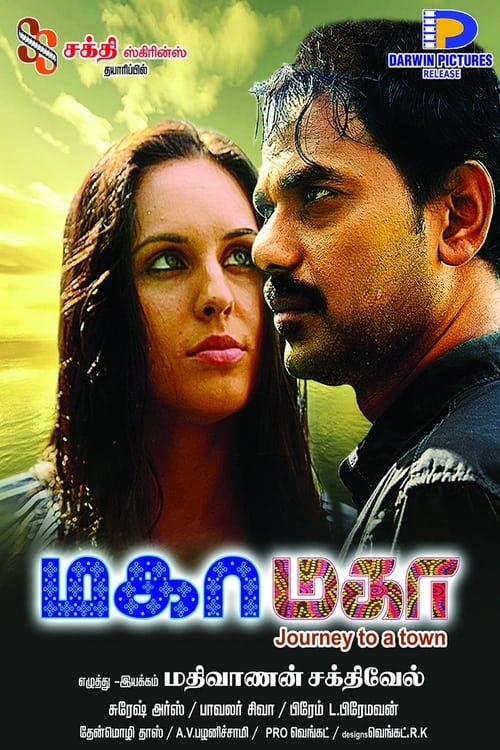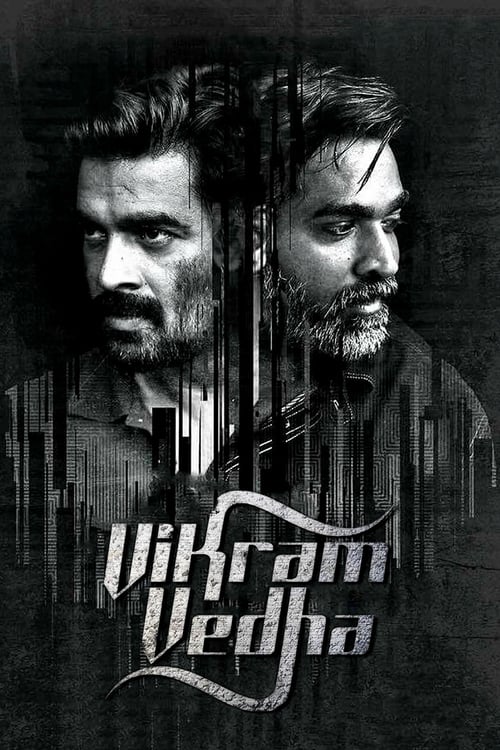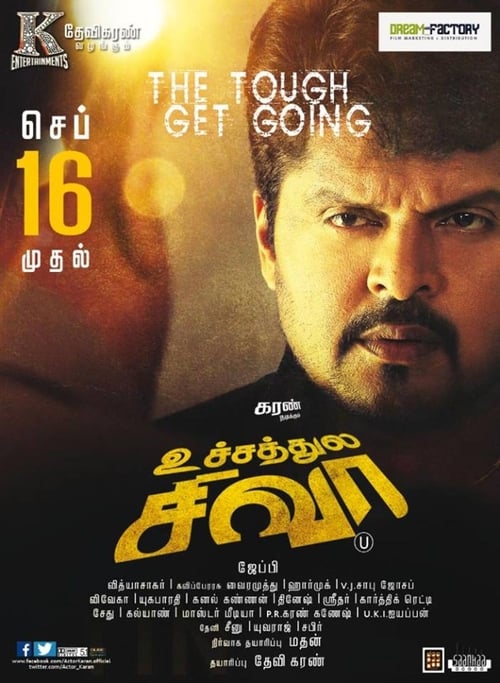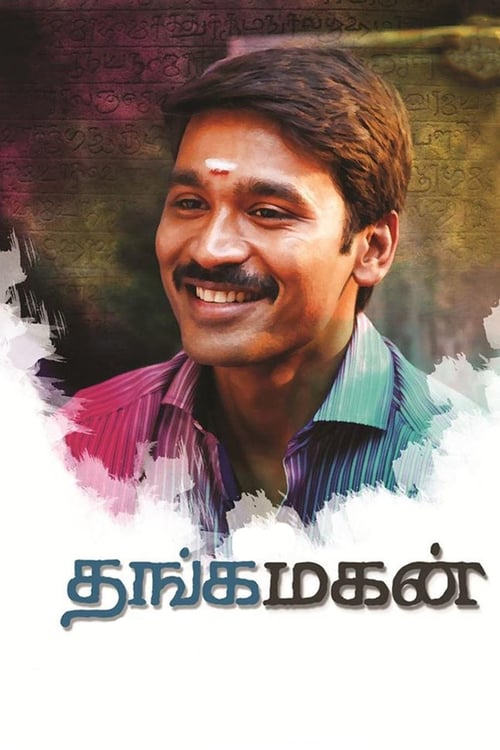
Ask Your Own Question
What is the plot?
Saga Pandian, a carefree and compassionate young man, lives in a quiet village nestled in the heart of Tamil Nadu, India. The sun rises over the lush fields, casting a golden glow on the thatched roofs and dusty lanes. Saga is known for his easy smile and willingness to help anyone in need. He spends his days working in the fields, laughing with his close friend Maruthu, and listening to the stories of his uncle, R. Manmadhan, a man who once dreamed of a better life abroad but never left. Saga's father, Rajendranath, watches his son with a mixture of pride and worry, sensing that Saga's restless spirit will soon carry him far from home.
One afternoon, as Saga walks through the village, he notices a woman weeping by the roadside. Her name is Lakshmi Devayani, and she is distraught because her husband vanished without a trace after traveling to Malaysia in search of work. Saga, moved by her sorrow, promises to help her find answers. He listens as she recounts the last letter she received from her husband, dated March 12, 2014, in which he described the difficulties of finding honest employment and the strange disappearances of other Indian workers. Saga feels a deep sense of responsibility, not just for Devayani, but for all those who leave their homes in search of a better future.
The village is filled with stories of young men and women who have gone abroad, lured by promises of wealth and opportunity, only to vanish or return broken. Saga begins to question his own future. He confides in Maruthu, "If I stay here, I'll never know what's out there. If I go, at least I'll have tried." Maruthu, ever the loyal friend, encourages him, "But don't forget who you are, Saga. No matter where you go, your heart will always be here."
With a heavy heart and a suitcase full of dreams, Saga boards a flight to Kuala Lumpur, Malaysia, on April 1, 2015. The city is a whirlwind of lights, noise, and unfamiliar faces. Saga feels both exhilarated and overwhelmed. He checks into a modest hostel, where he meets other Indian migrants, each with their own story of hope and hardship. Among them is Neha Hinge, a bright and determined woman who has come to Malaysia to support her family back home. Neha and Saga quickly form a bond, sharing their fears and aspirations over cups of chai in the hostel's common room.
Saga's first few weeks are a struggle. He takes on odd jobs, from cleaning to construction, but the pay is meager, and the work is grueling. He begins to understand the desperation that drives so many to risk everything for a chance at a better life. One evening, as he walks home from work, he witnesses a suspicious exchange in a dimly lit alley. Two men in dark coats pass a small package to a third, who quickly disappears into the shadows. Saga's curiosity is piqued, but he knows better than to interfere.
The next day, Saga receives a call from Devayani. Her voice is trembling with hope and fear. "Saga, I heard from someone who knows someone. They say my husband was last seen near a detective agency in Kuala Lumpur. Please, if you can, find out what happened to him." Saga feels the weight of her plea. He decides to visit the agency, hoping for answers.
The detective agency is run by Priya, a sharp and resourceful woman who has made a name for herself in the expatriate community. Priya is initially skeptical of Saga, but his sincerity and determination win her over. "You're not a detective," she says, "but you have a good heart. That's something." She agrees to let Saga assist her in her investigations, starting with the case of Devayani's missing husband.
As Saga begins to work with Priya, he discovers a hidden world of crime and corruption. The agency is often called upon to help Indian nationals who have fallen victim to scams, exploitation, and violence. Saga's humanitarian instincts drive him to help, but he soon realizes that the cases are more complex than he imagined. He learns that many of the missing workers are connected to a shadowy network involved in the production and distribution of illegal drugs and fake medicines.
One night, while reviewing files at the agency, Saga comes across a photograph of a man who looks strikingly like Devayani's husband. The man is standing outside a warehouse on the outskirts of Kuala Lumpur, surrounded by armed guards. Priya explains that the warehouse is suspected to be a front for a drug manufacturing operation. "This is dangerous work, Saga," she warns. "If you get involved, there's no turning back."
Saga is torn between his desire to help Devayani and the fear of what he might uncover. He confides in Neha, who listens with concern. "You can't save everyone, Saga," she says. "But if you can save one person, isn't that worth it?" Her words give him the courage to press on.
Saga and Priya begin to investigate the warehouse, gathering evidence and interviewing witnesses. They learn that the operation is run by a ruthless gang led by a man known only as Tiger, a former village thug who has risen to power through violence and intimidation. Tiger's right-hand man is Chinrasu, a cunning and brutal enforcer who will stop at nothing to protect the gang's secrets.
As Saga delves deeper, he uncovers a web of deceit that reaches into the highest levels of the expatriate community. He discovers that some of the missing workers were forced to work in the warehouse, producing fake medicines that are sold to unsuspecting patients. Others were killed when they tried to escape or expose the truth. Saga's heart aches for the victims, but he knows that he must be careful. The gang is watching, and any misstep could cost him his life.
One evening, while surveilling the warehouse, Saga is ambushed by Tiger's men. They beat him mercilessly, warning him to stay away from their business. "This is not your village, boy," one of the thugs sneers. "Here, you're nothing." Saga is left bruised and bleeding, but his resolve is stronger than ever. He returns to the agency, determined to bring the gang to justice.
Saga's investigation takes a dramatic turn when he receives a cryptic message from an anonymous source. The message leads him to a hidden cache of documents that reveal the full extent of the gang's operations. The documents show that the fake medicines are being distributed not only in Malaysia but also in India, where they are causing widespread harm. Saga realizes that the stakes are much higher than he thought. He must act quickly to stop the gang before more lives are lost.
With Priya's help, Saga devises a plan to infiltrate the warehouse. They gather a team of trusted allies, including Maruthu, who has traveled to Malaysia to support Saga, and Neha, who uses her connections to gather intelligence. The night of the operation is tense and fraught with danger. Saga and his team sneak into the warehouse, avoiding the guards and searching for evidence.
Inside, they find a nightmarish scene. Workers, many of them Indian migrants, are forced to toil in squalid conditions, producing fake medicines under the watchful eyes of armed guards. Saga is horrified by what he sees. He finds Devayani's husband, alive but broken, chained to a workbench. "They took everything from me," the man whispers. "My freedom, my dignity, my hope."
Saga frees the workers and confronts Tiger and Chinrasu. A fierce battle ensues, with Saga using his wits and courage to outmaneuver the gang. In the chaos, Tiger is killed by one of his own men, who turns against him in a moment of desperation. Chinrasu tries to escape, but Saga catches him and delivers a final blow, ending the gang's reign of terror.
The warehouse is raided by the authorities, who arrive just in time to arrest the remaining gang members. The evidence gathered by Saga and his team is enough to dismantle the entire operation. Devayani's husband is reunited with his family, and the workers are given the chance to start anew.
Saga's journey is not without personal cost. He learns that Neha has a past that she has kept hidden from him. She confesses that she was once involved with the gang, but she left when she realized the harm they were causing. Saga is hurt by her deception, but he understands the pain and fear that drove her choices. "We all make mistakes," he says. "What matters is that we try to make things right."
The film ends with Saga standing on the rooftop of the detective agency, looking out over the city. The sun sets behind the skyline, casting a warm glow over Kuala Lumpur. Priya joins him, and they share a moment of quiet reflection. "You've changed, Saga," she says. "You're not just a village boy anymore. You're a man who has faced the darkness and come out stronger."
Saga smiles, thinking of his village, his family, and the friends who have stood by him. He knows that his journey is far from over, but he is ready to face whatever comes next. The era of change, the "Sagaptham," has begun.
In the final scene, Saga receives a letter from Devayani. She thanks him for giving her husband a second chance and for bringing hope to so many. Saga folds the letter and places it in his pocket, a reminder of the lives he has touched and the difference he has made. The camera pans out, showing Saga walking through the bustling streets of Kuala Lumpur, a man transformed by his experiences, ready to embrace the future with courage and compassion.
What is the ending?
In the ending of "Sagaptham," the protagonist, a determined young man named Karthik, confronts the antagonist, a powerful local don named Kaalidass. After a series of intense confrontations, Karthik ultimately defeats Kaalidass, leading to a resolution of the conflict. The film concludes with Karthik reuniting with his love interest, and the community celebrating their newfound freedom from Kaalidass's tyranny.
As the climax of "Sagaptham" unfolds, the tension escalates dramatically. Karthik, portrayed with a fierce determination, prepares for the final showdown against Kaalidass. The scene is set in a dimly lit warehouse, where Kaalidass has gathered his henchmen, showcasing his power and control over the area. Karthik enters, his expression a mix of resolve and anger, knowing that this confrontation is not just for himself but for the entire community that has suffered under Kaalidass's reign.
The atmosphere is thick with anticipation as Karthik and Kaalidass exchange heated words, revealing their deep-seated animosity. Kaalidass, confident and menacing, underestimates Karthik, believing that his brute strength and influence will secure his victory. However, Karthik's inner strength and the support of his friends and family fuel his determination. The fight begins, and the choreography is intense, with Karthik using both his agility and intelligence to outmaneuver Kaalidass and his men.
As the battle rages on, Karthik's emotional state fluctuates between fear and courage. Flashbacks of his loved ones and the struggles of his community flash through his mind, reminding him of what is at stake. Each punch he throws is not just a physical blow but a strike against the oppression that has plagued his life and the lives of those around him.
In a pivotal moment, Karthik manages to disarm Kaalidass, turning the tide of the fight. The scene is charged with energy as Karthik, now emboldened, delivers a powerful final blow that sends Kaalidass crashing to the ground. The henchmen, witnessing their leader's defeat, begin to flee, realizing that their power was built on fear and that Kaalidass's reign is over.
With Kaalidass defeated, the community begins to emerge from the shadows of fear. Karthik stands tall, breathing heavily but victorious, as his friends and family rush to embrace him. The scene shifts to a vibrant celebration in the streets, where the townspeople express their gratitude and relief. Karthik's love interest, who has been a source of strength throughout the film, runs to him, tears of joy in her eyes. They share a heartfelt embrace, symbolizing hope and a new beginning.
As the film draws to a close, the camera pans over the jubilant crowd, capturing the essence of freedom and unity. Karthik's journey from a young man seeking revenge to a hero who liberates his community is complete. The final shot lingers on Karthik and his love interest, standing together amidst the celebration, embodying the triumph of good over evil and the power of love and resilience in the face of adversity.
Is there a post-credit scene?
In the movie "Sagaptham," there is no post-credit scene. The film concludes without any additional scenes or content after the credits roll. The story wraps up with the resolution of the main plot, focusing on the characters' journeys and the outcomes of their conflicts. The absence of a post-credit scene allows the audience to reflect on the film's themes and character arcs without any further developments or cliffhangers.
What motivates the main character, Karthik, to seek revenge throughout the film?
Karthik, portrayed by the lead actor, is driven by a deep sense of justice and personal loss. After witnessing the brutal murder of his father, he is consumed by a desire to avenge his death. This motivation is compounded by his love for his family and the need to protect them from the same fate. His emotional turmoil is palpable as he grapples with feelings of helplessness and anger, pushing him to take drastic measures against those responsible.
How does Karthik's relationship with his love interest, Meera, evolve throughout the film?
Karthik's relationship with Meera begins as a sweet and innocent romance, filled with moments of joy and laughter. However, as Karthik becomes increasingly embroiled in his quest for revenge, the strain on their relationship becomes evident. Meera's concern for Karthik's safety and her desire for a peaceful life clash with his obsession for vengeance, leading to emotional confrontations that highlight their differing priorities. Ultimately, her unwavering support and love serve as a grounding force for Karthik, even as he spirals deeper into darkness.
What role does the antagonist, played by the character of Ranjith, play in Karthik's journey?
Ranjith, the film's antagonist, serves as the embodiment of the corruption and violence that Karthik seeks to eradicate. His character is ruthless and cunning, orchestrating the events that lead to Karthik's father's death. Ranjith's actions not only propel Karthik's quest for revenge but also represent the larger societal issues that Karthik is fighting against. The cat-and-mouse dynamic between Karthik and Ranjith intensifies the narrative, as Karthik's encounters with Ranjith reveal the depths of his own resolve and the moral dilemmas he faces.
What significant turning point occurs when Karthik confronts Ranjith for the first time?
The first confrontation between Karthik and Ranjith is a pivotal moment in the film, marked by high tension and emotional stakes. Karthik, fueled by rage and desperation, finally faces Ranjith in a dramatic showdown. This encounter is not just a physical battle but also a clash of ideologies, as Karthik confronts the man who has caused him so much pain. The scene is charged with emotion, showcasing Karthik's internal struggle as he grapples with the desire for revenge versus the need to uphold his moral values. The outcome of this confrontation sets the tone for Karthik's subsequent actions and deepens his character arc.
How does the film depict the theme of family loyalty through Karthik's actions?
Family loyalty is a central theme in 'Sagaptham,' illustrated through Karthik's unwavering commitment to avenging his father's death. His actions are driven by a profound sense of duty to protect his family and honor their legacy. The film portrays various flashbacks that highlight the bond between Karthik and his father, emphasizing the values instilled in him. As Karthik navigates the treacherous path of revenge, his loyalty to his family is tested, leading to moments of introspection where he must weigh the consequences of his actions against the love he has for his family. This theme resonates throughout the film, shaping Karthik's decisions and ultimately defining his character.
Is this family friendly?
"Sagaptham," produced in 2015, contains several elements that may not be suitable for children or sensitive viewers. Here are some potentially objectionable aspects:
-
Violence: The film features action sequences that include fights and confrontations, which may be intense and graphic. The portrayal of violence can be unsettling for younger audiences.
-
Death and Loss: Themes of loss and the impact of death are present, which can evoke strong emotional responses. Scenes depicting mourning or the aftermath of violence may be distressing.
-
Emotional Turmoil: Characters experience significant emotional struggles, including betrayal and revenge, which may be heavy for younger viewers to process.
-
Mature Themes: The film explores themes of loyalty, revenge, and the consequences of crime, which may be complex and difficult for children to understand fully.
-
Language: There may be instances of strong language or dialogue that could be inappropriate for younger audiences.
These elements contribute to a narrative that, while engaging, may not be suitable for all viewers, particularly children or those sensitive to such themes.










